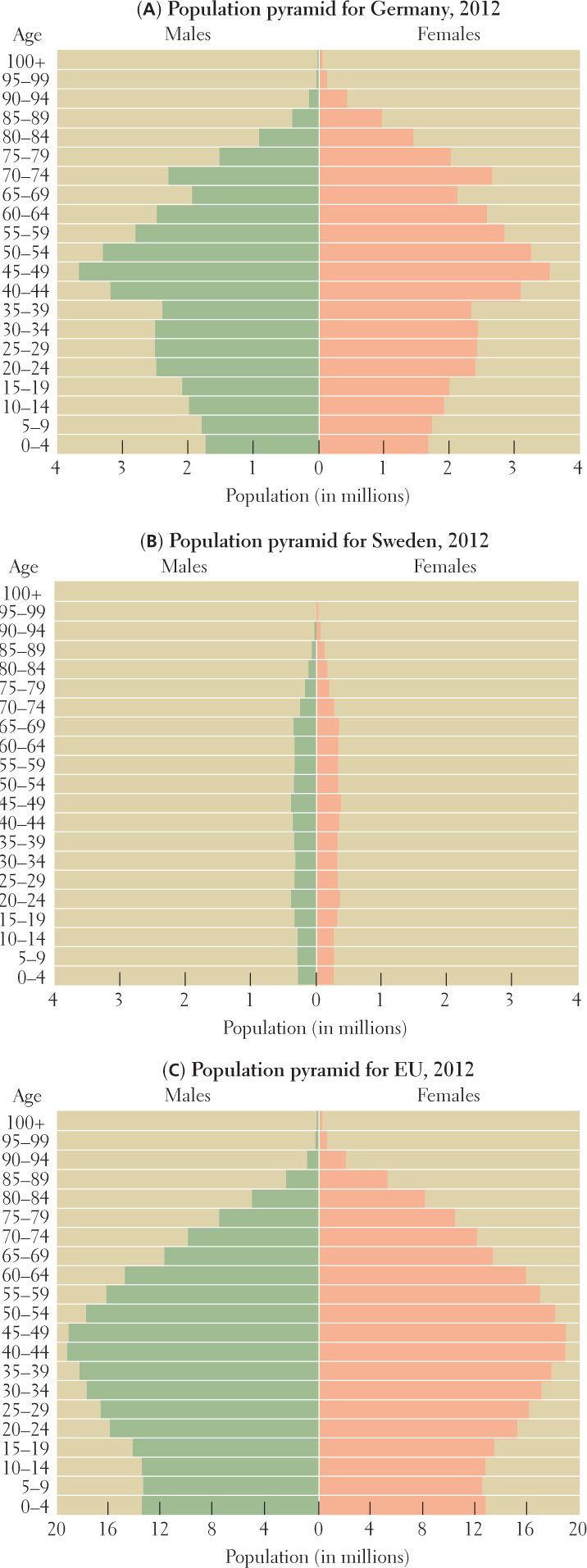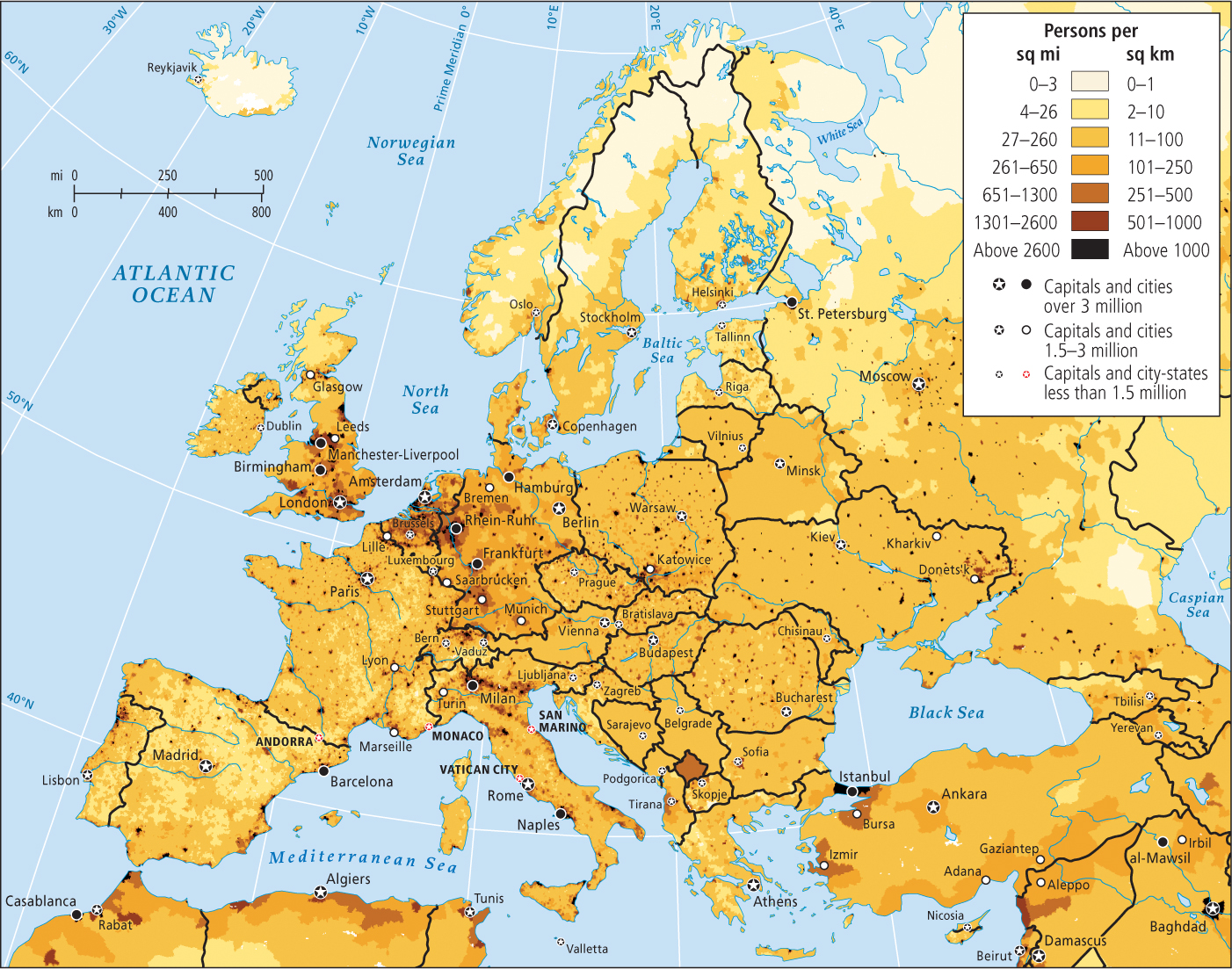4.8 POPULATION AND GENDER
GEOGRAPHIC INSIGHT 5
Population and Gender: Europe’s population is aging as its fertility rates decline, which they are doing for a number of reasons, including the fact that career-
A stable population with a low birth rate has several economic consequences. Because fewer consumers are being born, economies may contract over time. Demand for new workers, especially highly skilled ones, may go unmet. Furthermore, the number of younger people available to provide expensive and time-
Population aging is well advanced in Europe. Between 1960 and 2014, the proportion of the European population that is 14 years and under declined from 27 percent to 16 percent (well below the global average of 26 percent), while those over 65 increased from 9 percent to 16 percent (well above the global average of 8 percent). Longer life expectancies have influenced this trend; the average life expectancy of an EU citizen is 77 for men and 83 for women. However, a larger contributor to the aging of the population is the declining fertility rate.
Overall, Europe is now close to a negative rate of natural increase (<0.0), the lowest in the world. Already low fertility rates are shrinking across Europe, and they are lowest in Germany, the wealthiest country. The one-
The declining birth rate is illustrated in the population pyramids of European countries (Figure 4.21), which look more like lumpy towers than pyramids. Examples are the population pyramid of Sweden and of the whole European Union (see Figure 4.21B, C). The pyramids’ narrowing base indicates that for the last 35 years, far fewer babies have been born than in the 1950s and 1960s, when there was a post-

The reasons for these trends are complex. Urbanization and strong economic development play a role, as does the fact that more and more women want professional careers. In Germany, for example, birth rates are lowest among the most educated women, a group that is growing in size every year. Twenty-
European governments have tried to boost their fertility rates with a variety of policies, the most successful of which have addressed the problems faced by working mothers. Current research on fertility policy suggests that career-
Immigration provides only a partial solution to the dwindling number of young people. Immigrants from outside the region are the major source of population growth today in the EU, and they are slowing the trend toward population aging. However, to completely counter the low fertility rates common throughout this region, tens of millions of new immigrants would be required. This prospect is politically unpopular in Europe, where many voters are alarmed by the potential cultural changes brought by so many immigrants, often from very distant places with different value systems. Moreover, after a generation, most immigrants choose to have smaller families, making immigration a poor long-
Population Distribution There are currently about 540 million Europeans. Of these, 500 million live within the European Union. The highest population densities stretch in a discontinuous band from the United Kingdom south and east through the Netherlands and central Germany into northern Switzerland (Figure 4.22). Northern Italy is another zone of high density, as are pockets in many countries along the Mediterranean coast. Overall, Europe is one of the more densely occupied regions on Earth, as shown on the world population density map in Figure 1.26.

THINGS TO REMEMBER
GEOGRAPHIC INSIGHT 5
Population and Gender Europe’s population is aging as its fertility rates decline, which they are doing for a number of reasons, including the fact that career-
oriented working women are choosing to have only one or two children. Fearing that aging populations could slow economic growth, European countries have tried to boost their fertility rates with a variety of policies, the most successful of which have addressed the needs of working mothers. Because Europe’s population is not growing and the number of consumers is staying the same or decreasing, economies may contract over time.
Immigration provides only a partial solution to the dwindling number of young people. There is political opposition to immigration on the scale that would be needed, and immigrants tend to have smaller families after a generation, making this only a short-
term solution.